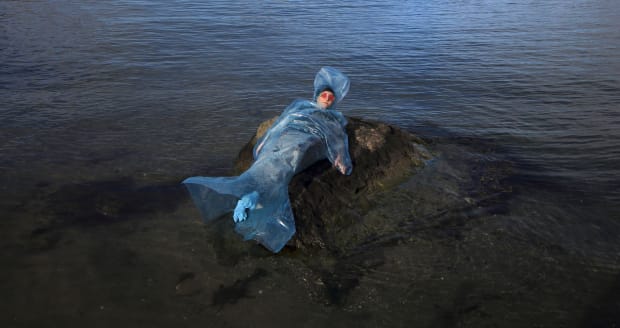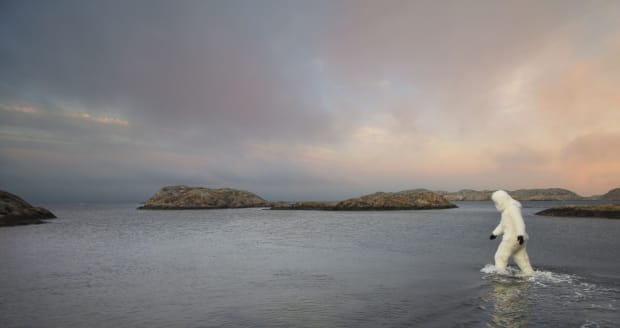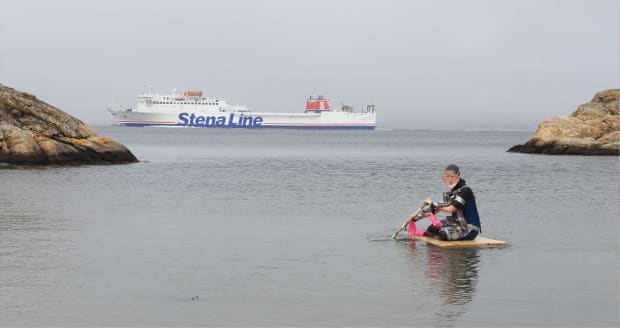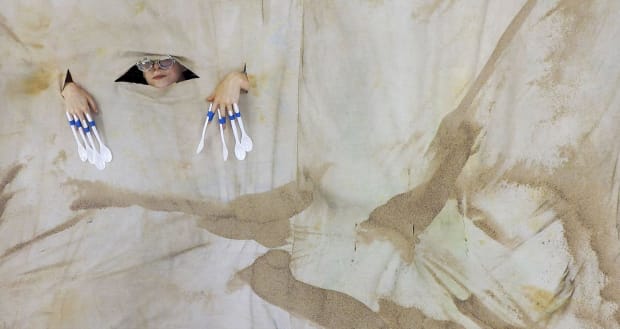First provoked by with my encounter with the bronze capitoline wolf statue in the Uffizi, I have been following an ever thickening line of enquiry between the wolf and the woman, examining if we can use reactions to wolves as a societal barometer for the treatment of women. While still resident in Florence I began to study the restless dualistic role of mother and whore played out in Italian culture through the eyes of Dante’s icon of lust and the maternal Capitoline wolf.
On my return to the UK I continue by pulling articles from the local paper archives from the 1910s to track the last wolf of England, allowing me to map and follow her journey through the woodland creating shrine-like tributes to her along the way (Mutter, 2011).
In some way possessed by the ghost of this wolf, I was driven north into a staring contest with Elera, the female alpha of a pack in the Scottish Highlands, as I explored the folkloric demonised wolves of northern Scotland (with RSA Residencies for Scotland, Creative Scotland and Cromarty Arts Trust, 2011).
The wolf’s presence was keenly felt when I was invited to explore Finnish and Karelian sexuality in the wild north of 19th century Finland (Mustarinda Centre for Art and Ecology, 2014) where I found myself following bloodstained wolf footprints out into the snow laden old growth forest of Paljakka.
In my thesis, Minding the Gap: Reimagining The Space Between Human And Non-Human Animals, I speak directly of the moment I saw the capitoline wolf statue in the Uffizi (accompanied by a photograph on made my analog camera, loaded with the antique market film - although un-noted was how the camera clicks call was returned by a chastising tutting from the Uffizi security.)
This capitoline wolf bared her teeth again in my publication Interview with my Dog (2017), published by the University of Gothenburg Press, with kind support of Fru Mary von Sydows Stipend.
I have not a doubt in my mind that being awarded the John Kinross Scholarship had a significant and irrevocable impact on myself and my practice, and I’ll always be grateful that Royal Mail delivered my application on time.
 Rebecca Cusworth, still from How to See the Sea as Seal and Other Stories, multiscreen video installation 2017.
Rebecca Cusworth, still from How to See the Sea as Seal and Other Stories, multiscreen video installation 2017. Rebecca Cusworth, still from How to See the Sea as Seal and Other Stories, multiscreen video installation 2017.
Rebecca Cusworth, still from How to See the Sea as Seal and Other Stories, multiscreen video installation 2017. Rebecca Cusworth, still from How to See the Sea as Seal and Other Stories, multiscreen video installation 2017.
Rebecca Cusworth, still from How to See the Sea as Seal and Other Stories, multiscreen video installation 2017. Rebecca Cusworth, still from How to See the Sea as Seal and Other Stories, multiscreen video installation 2017.
Rebecca Cusworth, still from How to See the Sea as Seal and Other Stories, multiscreen video installation 2017.



